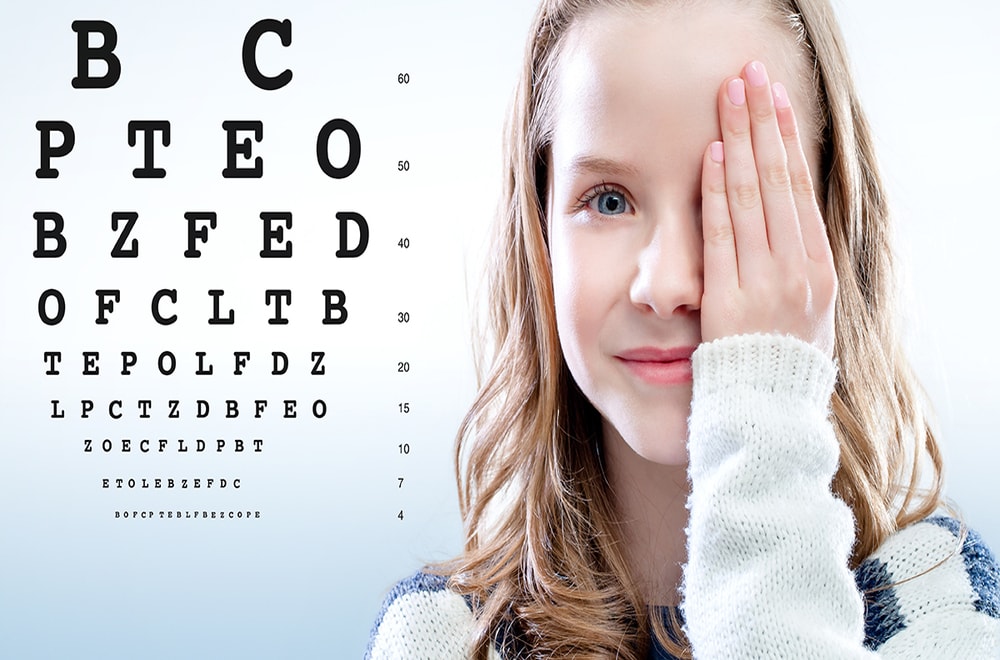How To Improve Your Eyesight

Maintaining good eye health is important for your overall quality of life. Eyesight can affect everything from reading and performing tasks at work to your ability to effectively communicate with others. If you are experiencing certain problems with your eyesight, there are ways to improve your vision naturally without lenses or surgery.
While no natural remedies can permanently fix conditions like nearsightedness, farsightedness, and astigmatism, healthy habits like regular exercise and adopting a more nutritious diet can help improve your eye health.
Role of Healthy Lifestyle
Having trouble with your eyesight is very common. About 12 million people 40 and older in the United States experience vision impairment of some kind, while approximately 6.8% of children under 18 are living with a diagnosed eye condition.
Adopting healthy lifestyle changes can be an easy way to address some vision problems. Recent research has shown that people who achieved improved cardiovascular health through a heart-healthy diet and exercise had lower odds of developing ocular diseases like age-related macular degeneration, glaucoma, and diabetic retinopathy.
Eating a Healthy Diet
To ward off degenerative, potentially blinding conditions like glaucoma, your eyes need vitamins and nutrients. Antioxidant vitamins such as vitamins A, C, and E and the mineral zinc can help stop the progress of age-related macular degeneration, for example.
Lutein and zeaxanthin are nutrients that you can find in green leafy vegetables, as well as other food items, like eggs. They have been shown to be helpful for decreasing the risk of macular degeneration and cataracts. Omega-3 fatty acids are crucial for visual development and for the eye’s retinal functioning.
You can find a lot of these crucial nutrients in common food items:
- Omega-3 fatty acids are components in walnuts, cold-water fish, and flaxseed.
- Zinc can be found in shellfish and red meat.
- Some foods with vitamin A include cantaloupes, carrots, mangos, and sweet potatoes.
- Vitamin C can be found in brussels sprouts, broccoli, and oranges.
- Vitamin E is found in almonds, sunflower seeds, as well as peanut butter.
Getting Regular Exercise
Regular exercise is great for your overall health, particularly your eyes. In one study, for example, people who engaged in moderate exercise on a regular basis were 25% less likely to develop glaucoma.
Another reason exercise is important to eye health is that health conditions that can stem from a lack of physical activity and weight gain can have significant ramifications on your eye health. One example is diabetic retinopathy, which can lead to vision loss and blindness in people who have diabetes.
Type 2 diabetes is more common in people who have obesity. People who have diabetes should get a dilated eye exam once a year or more often, as indicated by their eye doctor. Beyond diabetic retinopathy, diabetes can make you two to five times more likely to have cataracts and doubles the risk of having open-angle glaucoma.
Incorporating regular walks, riding a bike, or doing light at-home workouts could be ways to be more active and ultimately protect your eyes.
Managing Health Conditions
Some chronic conditions can have an impact on your eye health. If you are managing a chronic condition, you should ask your doctor how it may affect your body as a whole.
Common conditions that can affect eye health include:
- Diabetes type 1 and diabetes type 2: Can lead to diabetic retinopathy, a potential cause of diminished vision or blindness.6 Adopting physical activity as part of your normal routine, as well as embracing a diabetes-friendly diet can help manage the condition and avoid related vision problems.
- Hypertension (high blood pressure): Increases a person’s risk of stroke and heart disease, two of the leading causes of death in the United States.8 High blood pressure can cause hypertensive retinopathy, which is blood vessel damage that can lead to blurry vision and even blindness. Keeping your blood pressure in check can help you avoid these eye conditions.
Other chronic conditions that can affect your sight include high cholesterol, asthma, cancer, and depression. Chronic health conditions tend to be more common in older adults who have some kind of vision impairment than in those with better eye health. Given the gradually aging U.S. population, a great public health burden is expected to present itself as more people manage vision impairments along with chronic conditions.
It’s important to be in contact with your eye doctor and primary physician if you notice any changes to your vision, especially if you have one of the chronic conditions that are linked to eye problems.
Visiting Your Eye Doctor
If you find yourself experiencing sudden blurry vision, double vision, diminished vision, loss of peripheral vision, eye pain, or discharge or pus in or around your eye, you should seek emergency medical attention.
If your vision seems to be changing gradually, visit your optometrist or ophthalmologist for an eye exam to assess your vision. They will be able to determine whether it is a symptom of a more serious underlying condition.
Talk to your eye doctor about things like:
- Is it difficult to read small print in a book?
- Do your eyes hurt?
- Do you have signs of conjunctivitis (pink eye)?
As with other aspects of your health, it’s important to ask your eye doctor any questions and tell them about any changes you might be experiencing with your vision.
In general, adults who do not have any risk factors for eye disease should have a baseline eye examination at age 40, and every two to four years until age 54. Adults who are age 55 to 64 who don’t have risk factors for eye disease should have an eye examination every one to three years, and then every one or two years after that.
Using Eye Protection
It’s important to do what you can to protect your eyes from harm. Ultraviolet radiation (UV) from the sun can greatly damage our eyes.12 It’s believed that sun damage can contribute to cataract formation.
You should wear sunglasses whenever you are outside, not just on sunny days.
It’s recommended that you find sunglasses that offer 100% UV protection, have lenses that are scratch-resistant, and are free of defects that could actually interfere with your vision while wearing them. They should also have a large frame that covers most of the area around your eyes.
After cataract surgery, it is especially important to wear sunglasses to protect your eyes.
Resting Your Eyes
You should give your eyes a break now and then. Asthenopia, or eye strain, is when your eyes are sore, tired, or achy, especially after looking at a computer or phone screen for too long. It can happen when you use the muscles that control your eye movements for a long time.
You can try resting your eyes using the 20-20-20 rule: Every 20 minutes, shift your eyes to look at an object at least 20 feet away, for at least 20 seconds.
You can also rest your eyes by shifting the lighting in your room. Stay 25 inches away from a screen when you do stare at one.
Quitting Smoking
Not only is smoking a dangerous risk factor for lung cancer and other illnesses, but it can also damage your vision. Smoking can make your eyes particularly scratchy, red, and stinging. It also increases the chance of developing cataracts.
Smoking can lead to a number of different eye diseases and/or make them worse, leading to vision loss and blindness.
Smoking is linked to a higher risk of glaucoma.
Smokers and former smokers are also more likely to develop age-related macular degeneration, while smokers who also have diabetes are at greater risk for diabetic retinopathy.
If you are pregnant, smoking makes your baby five times more likely to become infected with bacterial meningitis, a serious brain infection.
Do Eye Exercises Work?
Eye exercises can alleviate discomfort or irritation, but they won’t cure eye diseases or correct vision.
Optometrists sometimes recommend vision therapy to develop or sharpen visual skills or change the ways people process visual information. It usually consists of exercises that are conducted during office visits and at home over the course of two months.
Depending on your condition, you may also be given training glasses, prisms, filtered targets, or balance boards to help test and improve your vision.
Different kinds of vision therapy include:
- Orthoptic vision therapy: These include a series of exercises carried out weekly for several months. The exercises aim to improve binocular function and are instructed at the office and done at home.
- Behavioral/perceptual vision therapy: Eye exercises can be done to improve visual processing.
- Vision therapy: These exercises may prevent the progression of myopia (nearsightedness).
References
This article is written by Brian Mastroianni. You can find the original version of this article from here.







